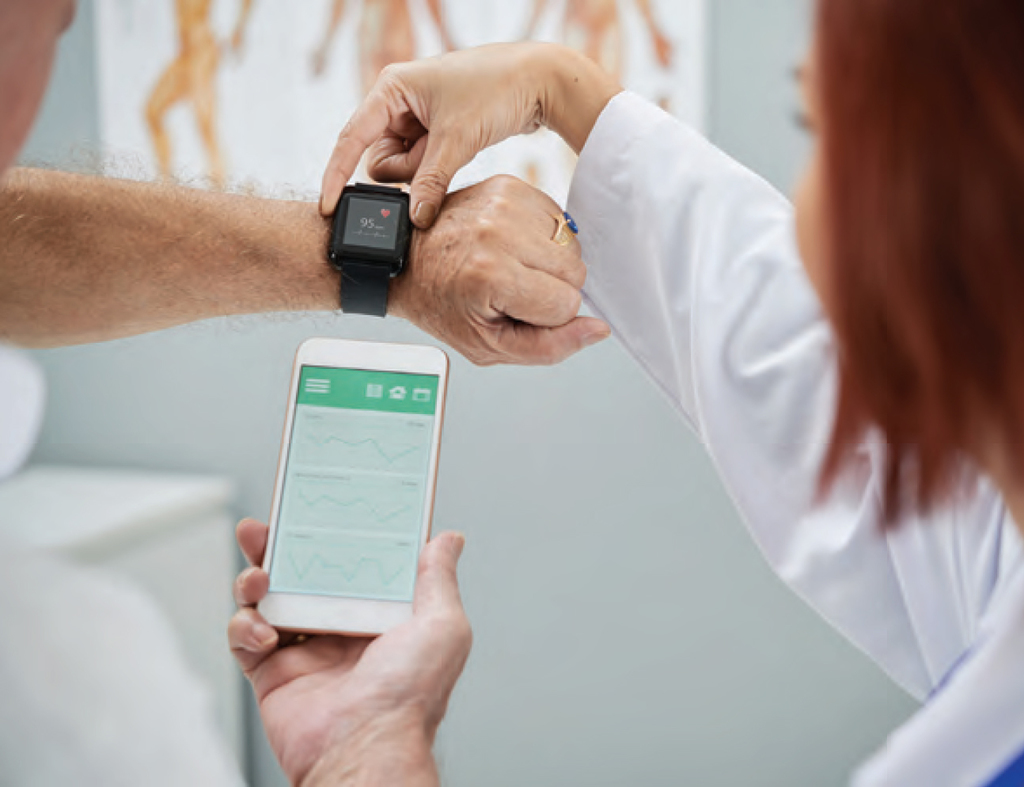Paradigm Shift: Can Rethinking How Technology Is Used Change How Healthcare Is Delivered?
// By Althea Fung //
 Technology is drastically changing how we live. This is particularly evident in healthcare, where technology like wearable devices such as Apple Watch give users updates on their health in real time. That same technology is opening up new avenues for healthcare organizations to connect with chronically ill patients. The Society for Healthcare Strategy and Market Development (SHSMD) recently released Futurescan 2019-2024: Healthcare Trends and Implications, which looks at how technology reframes the way care is delivered and a number of other key issues.
Technology is drastically changing how we live. This is particularly evident in healthcare, where technology like wearable devices such as Apple Watch give users updates on their health in real time. That same technology is opening up new avenues for healthcare organizations to connect with chronically ill patients. The Society for Healthcare Strategy and Market Development (SHSMD) recently released Futurescan 2019-2024: Healthcare Trends and Implications, which looks at how technology reframes the way care is delivered and a number of other key issues.
Big technology companies like Amazon, Apple, IBM, and Google’s parent company Alphabet are making a move into healthcare. With advanced technology in AI (artificial intelligence) and cloud computing, these companies can offer products that move consumers from passive to active participants in their health.
Many healthcare organizations consider these ventures into healthcare by big companies a potential threat. A Futurescan survey of hospital and health system leaders found nearly half (47 percent) say a major technology company has emerged as a competitor to their organizations’ healthcare services or is very likely to do so. While these companies are changing the way healthcare is delivered, the authors of the Futurescan article “Flipping the Stack: Can New Technology Drive Health Care’s Future?” say the infusion of technology is an opportunity for healthcare organizations to rethink the healthcare delivery model.

Matthew Holt
“[Healthcare organizations] started with care delivery and then started to add other things to care delivery because they started to realize the problems with managing people with chronic illness. So they began adding services because static care delivery programs were getting too complex to manage,” says Matthew Holt, co-author of “Flipping the Stack” and founder of The Health Care Blog. He is also cofounder of the Health 2.0 conference with co-author Indu Subaiya, MD. “Then, going back to the ’60s, they started adding enterprise systems. We’ve turbocharged that in the last decade by putting about $30 billion into electronic medical records. Essentially we added a services layer and technology layer on top of care delivery.”
He continues: “The enterprise itself is not enough to manage everything that is going on in the life of chronically ill patients. We’re arguing that the technology platform, which enables us to always be on and monitoring, is going to get distributed. There is enough technology to look at it as a platform that takes over a lot of the supportive functions and advisory functions.”
Technology’s Impact on Care for the Chronically Ill
In this new model, technology becomes the starting point, and services are added as a secondary treatment method. Care delivery is put on top of the stack. The authors say this model can help reduce the high costs of care associated with treating the chronically ill.
The Centers for Disease Control and Prevention reports that 90 percent of the nation’s annual healthcare expenditures ($3.3 trillion) are for people with chronic conditions. A 2019 study by Premier, a healthcare improvement company, found that about 30 percent of emergency department visits among patients with one of six chronic conditions — asthma, COPD, diabetes, heart failure, hypertension, and behavioral health conditions such as mental health or substance abuse issues — are potentially unnecessary, leading to $8.3 billion in additional costs for the industry.
“Most of the costs [associated with chronically ill patients] occur when something goes wrong because of decisions they’ve made themselves or life situations that happen outside of their doctor’s office or hospital,” Holt says.
By using technology to monitor vital signs and habits of patients, organizations can run more efficiently. A study published in the journal CHEST found patients in an ICU equipped with telehealth services were discharged 20 percent faster and had a 26 percent lower mortality rate than traditional ICUs. Similarly, when Essentia Health, a healthcare system based in Minnesota, implemented a home monitoring system, the rate of 30-day readmissions for their patients with heart disease fell to 2 percent, well below the national average of 25 percent.

Wearable technology used to monitor vital signs and patient behavior outside the hospital or doctor’s office helps to drive down healthcare costs.
Beyond the EMR — Next-Generation Technology Platform

Indu Subaiya, MD
To implement programs like this, the technology block of the stack requires many layers, says article co-author Subaiya.
“If you think of the traditional EMR, it was designed to be infrastructure within hospitals to support billing and very mechanical aspects of care that needed to be coded for. They’re very transactional. We describe the stack as having exploded into five components of that technology platform,” she says.
She defines the five layers as:
- Storage. Subaiya defines storage as the base layer because it’s where all data is housed. In recent years, this has moved from client server machines to cloud-based services like Amazon Web Services or Microsoft’s Azure Cloud Storage. Technology vendor Allscript has put most of its technology onto Azure, while Epic and Cerner are moving clients to their private clouds.
- Transactions. “Transactions were simple billing codes and payment codes. But now you have a whole number of digital health companies working on revenue cycle management, to be able to see your bill and pay them in real time,” Subaiya says.
- Data exchange. Subaiya says data exchange between EMRs had been nonexistent. But Fast Healthcare Interoperability Resources (FHIR, pronounced like “fire”) is making it easier to transfer data among different applications.
- Analytics. While previously, analytics were unavailable within EMRs, AI and other data mining tools have made it possible to analyze patient data to improve clinical, operational, and financial outcomes.
- Interface. Also, with new technology, organizations now offer user-friendly products in their EMRs. Products like voice recognition software can now be integrated with EMRs to save clinical time.
“The stack is moving from a one-dimensional piece of plumbing to five layers, each of which there are hundreds of companies operating within these layers,” she says.
Holt says some of the technology being used to improve care comes directly from healthcare organizations. He advises that to continue growth and development of technology in the industry it is important to not just read about it, but spend time actually engaging with products.
“Figure out which doctors on the staff are building things, go play in VR (virtual reality) with your kids, don’t just read about it in Fortune magazine. You should try to get your hands dirty in it because it’s hard to grasp some of this stuff, how fast it’s moving,” he says.
Althea A. Fung is a digital content strategist and healthcare journalist. She is a senior editor at NewYork-Presbyterian.
